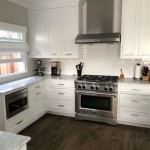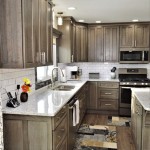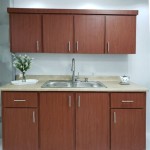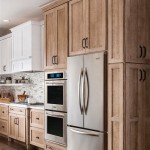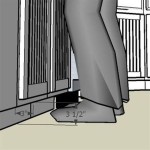Stripping Kitchen Cabinets: A Guide to the Essential Aspects
Stripping kitchen cabinets involves removing existing paint or finish to restore them to their original state or prepare them for a new finish. This process requires meticulous attention to detail and an understanding of the materials and techniques involved. This article delves into the essential aspects of stripping kitchen cabinets, providing a comprehensive guide to ensure a successful outcome.
Before embarking on this task, it is crucial to note that stripping kitchen cabinets can be a time-consuming and labor-intensive process. However, the end result of refreshed and revitalized cabinets can make it worthwhile. By understanding the essential aspects of stripping kitchen cabinets, you can effectively tackle this project and achieve the desired outcome.
1. Safety Considerations
Stripping kitchen cabinets involves the use of chemical strippers and sanding equipment, which can pose safety risks. Always wear appropriate personal protective equipment (PPE), including gloves, eye protection, and a respirator mask to minimize exposure to harmful substances. Ensure adequate ventilation in the work area to avoid inhaling fumes.
2. Material Identification
Properly identifying the material of your kitchen cabinets is essential for selecting the appropriate stripping method. Common materials include wood, laminate, and metal. Each material has its own unique characteristics and requires specific techniques for stripping. Misidentification can lead to damage to the cabinets.
3. Stripping Methods
There are several methods for stripping kitchen cabinets, including chemical strippers, heat guns, and sanding. Chemical strippers are effective but require careful handling due to their toxic nature. Heat guns can soften the finish, making it easier to scrape off, but caution must be exercised to avoid burning the cabinets. Sanding is a more labor-intensive method but provides greater control and precision.
4. Applying Chemical Strippers
When using chemical strippers, follow the manufacturer's instructions carefully. Apply the stripper evenly using a brush or roller, ensuring complete coverage. Allow the stripper to dwell for the recommended time, typically 15-30 minutes, to dissolve the finish.
5. Removing the Stripped Finish
Once the finish has been dissolved, it can be removed using a plastic scraper or putty knife. Work carefully to avoid gouging the wood. Rinse the surface thoroughly with water to remove any remaining stripper or residue.
6. Neutralizing and Cleaning
After stripping, it is important to neutralize any remaining stripper by wiping down the surface with a solution of denatured alcohol or mineral spirits. This helps prevent further chemical reaction and prepares the surface for refinishing.
7. Refinishing
Once the cabinets have been stripped, they can be refinished to your desired style and color. This may involve painting, staining, or applying a clear finish. Ensure proper preparation and follow the manufacturer's instructions for the chosen refinishing method.
Stripping kitchen cabinets requires careful planning, attention to safety, and a methodical approach. By understanding the essential aspects outlined in this article, you can successfully tackle this project and restore your kitchen cabinets to their former glory. Remember to prioritize safety and take your time to achieve the best possible results.

How To Strip Paint Off Kitchen Cabinets And Furniture

5 Steps To Stripping Kitchen Cabinets Smart Tips

How To Strip And Re Stain Kitchen Cabinets Clinton Township Mi Eason Painting

Refinishing Kitchen Cabinets Modern Refacing Made Easy Wisewood

An Easier Way To Remove Paint From Wood

How To Strip Paint Off Kitchen Cabinets And Furniture

How To Strip Paint Off Kitchen Cabinets And Furniture

Preparing Kitchen Cabinets For Painting Stripping And Sc
Ideal Home Improvement Blog Refinish Kitchen Cabinets

Nightwood Ny On Instagram Kitchen Cabinets Hinges Vintage Freestanding
Related Posts

